What is nanotechnology?
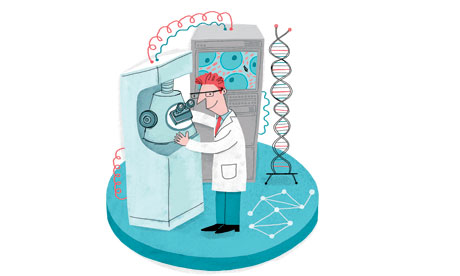 Nanotechnology is technology that operates on the nanoscale, about one billionth of a metre. If a living cell were a large city, then a nanometre would be about the size of a car. Nanotechnology is the art of engineering down at this hard-to-fathom scale.
Nanotechnology is technology that operates on the nanoscale, about one billionth of a metre. If a living cell were a large city, then a nanometre would be about the size of a car. Nanotechnology is the art of engineering down at this hard-to-fathom scale.The idea started in 1959 when famous physicist Richard Feynman suggested we could manipulate individual atoms and use them to build tiny machines. However, the term "nanotechnology" was not coined until the 1980s and lumps together different and varied ideas. All that unites these different technologies is that they use nano-sized building blocks. While other technologies make machines out of bulk materials – microchips out of silicon, wires out of copper, cars out of steel – nanotechnology makes machines out of large, complex molecules. Because nanotechnology works at such an extreme and unexplored scale, it opens up a world of new possibilities. Many nanomaterials possess special properties, such as great strength or high ability to conduct electricity.
Scientists working in the field of nanotechnology often look to nature to provide ideas for "smart" ways to solve complex problems. For example, spider silk and lotus leaves have both been studied in order to replicate their special properties, ie their tensile strength or ability to repel water, in engineered materials.
Why should I care about nanotechnology?
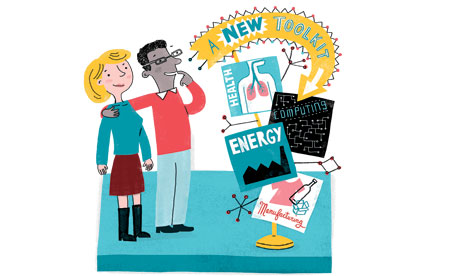 Nanotechnology is not just one technology, it is a whole new toolkit. It has the potential to change almost everything, from unimaginably small computer chips to tiny machines that find and fix damaged arteries inside our bodies. Nanotechnology could make our energy cleaner, our lives longer, and all of our existing technologies better.
Nanotechnology is not just one technology, it is a whole new toolkit. It has the potential to change almost everything, from unimaginably small computer chips to tiny machines that find and fix damaged arteries inside our bodies. Nanotechnology could make our energy cleaner, our lives longer, and all of our existing technologies better.This is not just a distant, science fiction-like dream – nanomaterials are already present in more than 1,000 consumer products, from cosmetics to cars. However, because nanotechnology works on such a new scale, it can be difficult to assess its dangers.
Everyday examples
Nanotechnology is a powerful tool for answering some of our most difficult questions. Scientists say we cannot afford to ignore the new medical, agricultural and environmental technologies it could provide as we search for solutions to an expanding global population.
Potential risks
Consumers will face different risks than the workers who manufacture these products, as they are the ones exposed to high doses. Various agencies are involved in making sure protection measures are adequate for both groups.
Where is nanotechnology used?
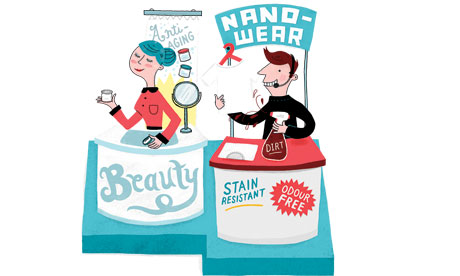 Nanotechnology is used in every sector you can think of, from the cars we drive to the clothes we wear. It is easy to see why ultra-lightweight materials with special electrical properties are useful, in electronics and computing for example, but nanomaterials are also present in scratch-resistant car bumpers, self-cleaning glass and anti-odour socks. Nanotech materials are being added to health and fitness products, from anti-ageing creams to skis. Silver is a powerful anti-microbial agent and more than 300 products use nanoscale silver to make anti-bacterial surfaces, clothing and even condoms.
Nanotechnology is used in every sector you can think of, from the cars we drive to the clothes we wear. It is easy to see why ultra-lightweight materials with special electrical properties are useful, in electronics and computing for example, but nanomaterials are also present in scratch-resistant car bumpers, self-cleaning glass and anti-odour socks. Nanotech materials are being added to health and fitness products, from anti-ageing creams to skis. Silver is a powerful anti-microbial agent and more than 300 products use nanoscale silver to make anti-bacterial surfaces, clothing and even condoms. Nanotechnology can also address environmental concerns. Nanotech catalytic converters and water filters remove environmental pollutants from our exhaust fumes and waste water. Wind turbines with nanomaterials are more efficient and cheaper, nanocrystal solar panels are just around the corner. Nanotechnology is already providing fresh solutions wherever it is applied.
Everyday example
The first use of nanomedicine was approved back in 1995 to treat cancer; since then researchers have continued to find new ways for nanotechnology to combat diseases.
Potential risks
Nanosilver, if over-used in consumer products that have a short lifespan, might cause harm to the environment.
How could it be used in the future?
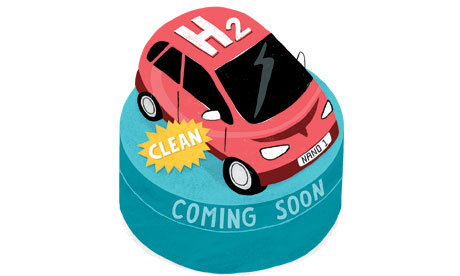 Today, many of our products are improved by nanomaterials. In the future, however, nanotechnology aims to use these nanomaterials to construct tiny nano-engineered machines, computers and medicines.
Today, many of our products are improved by nanomaterials. In the future, however, nanotechnology aims to use these nanomaterials to construct tiny nano-engineered machines, computers and medicines.In energy research, we may see a shift from using nanomaterials to improve existing technologies to using nanotechnology to develop entirely new ways of harnessing energy and, in the future, cars might be powered cleanly by hydrogen, stored safely in a solid form thanks to nanotechnology.
One day, nanotechnology may allow us to build any kind of structure we want from atomic building blocks to construct powerful computers, capable of processing as much information as a DNA molecule.
Everyday example
Researchers are already developing nanomedicines that target the proteins that accumulate in the brains of Alzheimer's patients, and nanoparticles that bind to tumour cells and treat them with antibodies. The big step will be using them to treat human diseases.
Potential risks
As with the adoption of all technologies, it is important to understand the motivation for doing so (eg money, public benefit) and its impacts, particularly risks.
Should nanoproducts be labelled?
 In November 2009, the European Union passed a law that will soon force manufacturers of cosmetics to state on the label if their products contain nanoparticles. Will more products follow? The issue of labelling has divided campaigners and politicians, just as it has with whether foods should be labelled as containing genetically modified ingredients.
In November 2009, the European Union passed a law that will soon force manufacturers of cosmetics to state on the label if their products contain nanoparticles. Will more products follow? The issue of labelling has divided campaigners and politicians, just as it has with whether foods should be labelled as containing genetically modified ingredients. Supporters of labels on nanotech say they will encourage consumer choice. Opponents say they will be meaningless without extra information on whether the nano-ingredients pose any risk. Without context, such labels could be misinterpreted as warnings, they say.
Everyday examples
Lipsticks and face creams that contain nanoparticles will soon be labelled as such. Perhaps "nano-free" could then start to appear on products too?
Potential risks
Labels might be a shortcut for industry to appear "transparent" without really informing the public.
Is the use of nanomaterials in food safe?
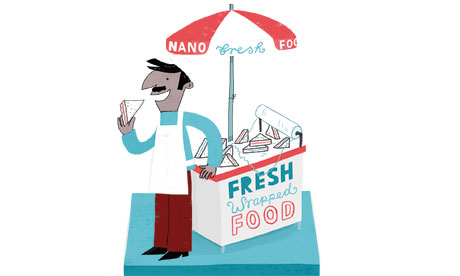 The food industry has been slow to exploit nanotechnology, perhaps because of public attitudes towards "non-natural" foods. But there are numerous ways the technology could be used, from stronger plastic films to keep sandwiches fresh for longer, to adding flavours to foods.
The food industry has been slow to exploit nanotechnology, perhaps because of public attitudes towards "non-natural" foods. But there are numerous ways the technology could be used, from stronger plastic films to keep sandwiches fresh for longer, to adding flavours to foods. In most cases, the development of such techniques has proceeded faster than the safety checks that are needed to make sure they are safe – could nanoparticles escape from plastic wrapping to enter a ham baguette? Would that packaging need to be disposed of differently and could it be recycled?
The European Food Standards Authority is keeping a close watch on developments.
Everyday examples
Nanoparticles could indicate the presence of harmful bacteria in foods.
Potential risks
The safety of nanomaterials used in food and food packaging must be fully assessed to avoid unwanted side effects.
What is the real added value of nanotech?
 Nanotechnology is such a broad term that it is difficult to generalise about the value it could bring. There will be clear social value, in the form of cleaner energy and improved medicines; and individual value in that nanotechnology used in sporting equipment, for example, would improve an individual's performance. On the other hand, having hundreds of products that are anti-bacterial most likely will not bring many additional benefits to society.
Nanotechnology is such a broad term that it is difficult to generalise about the value it could bring. There will be clear social value, in the form of cleaner energy and improved medicines; and individual value in that nanotechnology used in sporting equipment, for example, would improve an individual's performance. On the other hand, having hundreds of products that are anti-bacterial most likely will not bring many additional benefits to society. Value, to a certain extent, is in the eye of the user of the technology. A patient who can benefit from one type of tiny particle injected into their bloodstream to test for heart disease and so avoid surgery, for example, would probably see more added value than an average tennis player who started playing with a racket made and improved by using nanomaterials. A mis-hit still goes into the net after all, nanotech racket or not.
Everyday examples
Nanotechnology is being used as a marketing tag to sell everything from socks and t-shirts to sports equipment. The true benefit comes from the way it is used by the consumer.
Do nanoproducts require special disposal?
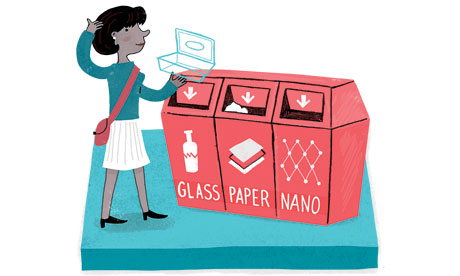 One of the concerns over the widespread use of nanotechnology is that tiny particles could escape from where they are intended to be used and end up polluting the wider environment.
One of the concerns over the widespread use of nanotechnology is that tiny particles could escape from where they are intended to be used and end up polluting the wider environment. This is not a problem confined to nanotechnology of course, and a number of chemicals that we know to be toxic are used in everyday products such as light bulbs and batteries. Consumers are asked to dispose of these products carefully, but there is no way to be sure that they will do so. And some escapes are impossible to prevent – for example, much of the mercury in the atmosphere comes from the cremation of dead people with dental fillings.
The effects of nanoparticles on the wider environment are largely unknown, so perhaps a cautious approach is the best one?
Everyday examples
Factories and research laboratories could release nanoparticles in their waste streams. Many international bodies are looking at ways in which accidental release of nanoparticles can be monitored and prevented.
No comments:
Post a Comment